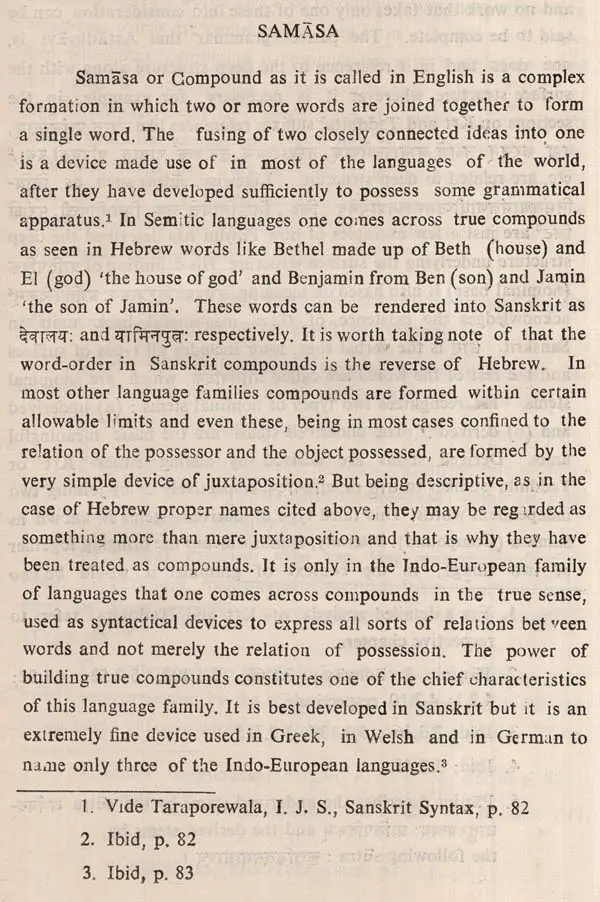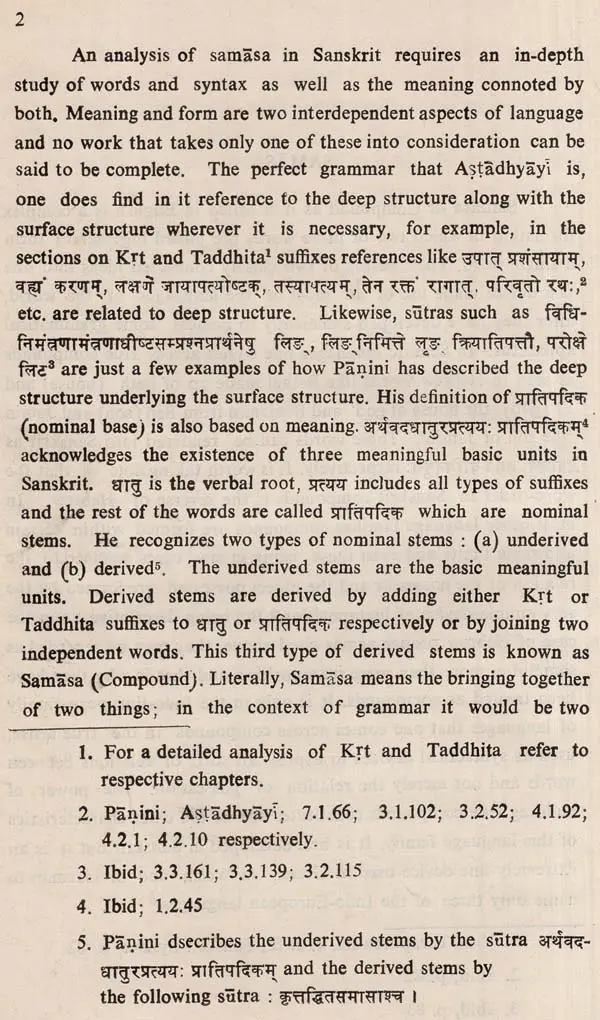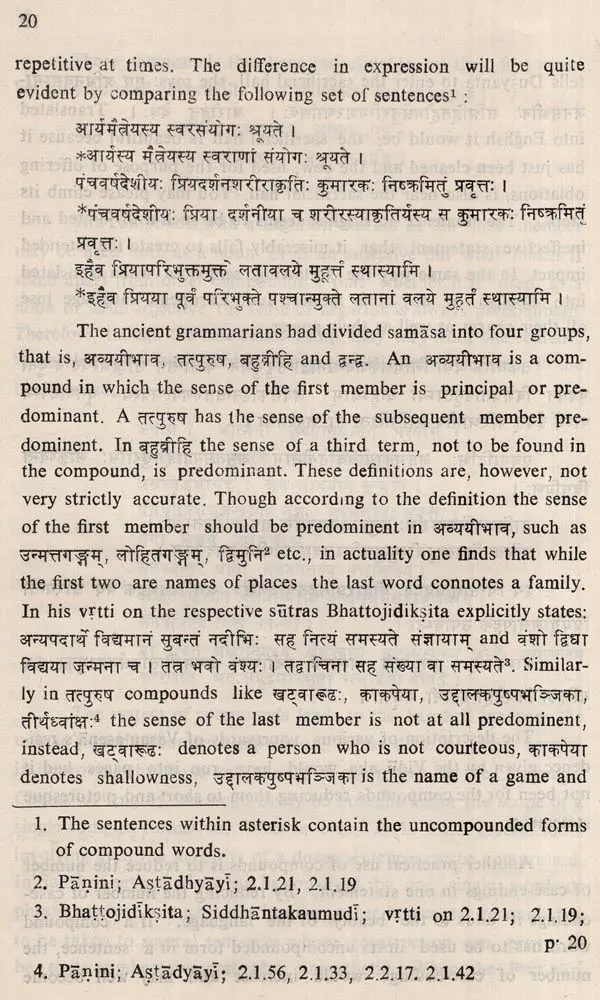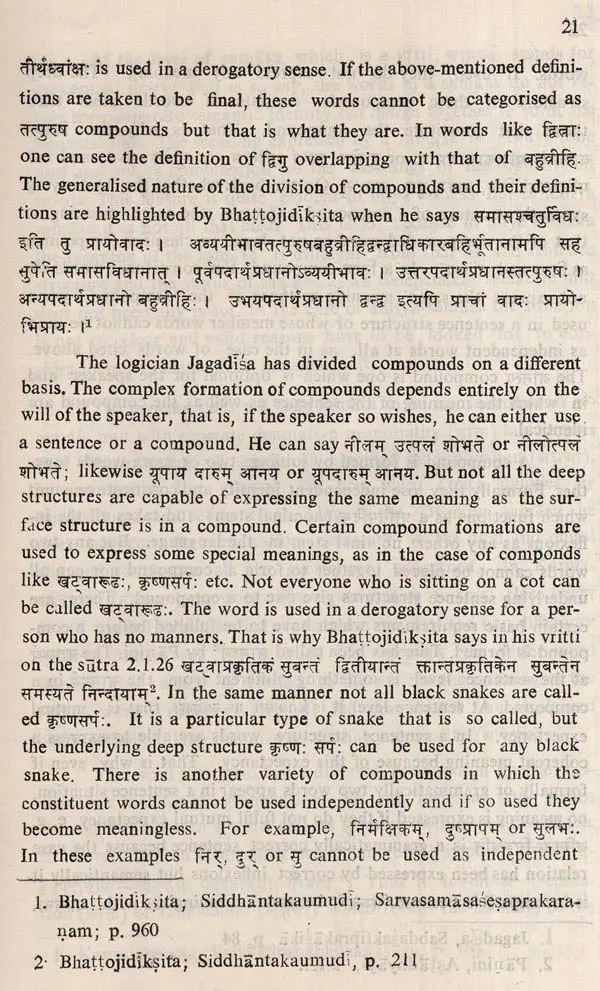
Structure and Meaning (An Old and Rare Book)
Book Specification
| Item Code: | UAN687 |
| Author: | Dipti Sharma |
| Publisher: | NAG PUBLISHERS |
| Language: | English and Sanskrit |
| Edition: | 1982 |
| Pages: | 159 |
| Cover: | HARDCOVER |
| Other Details | 8.50 X 5.50 inch |
| Weight | 280 gm |
Book Description
This monograph presents a formational and semantic analysis of Samasa, Taddhita, Tinanto, Kridanta and Nan. In the chapter on Tinanta both the underived and derived stems have been dealt with. The theoretical analysis is amply substantiated by examples culled from firmly established language. situations furnished by the prose dialogues of four classical plays - Bhasa's Svapnavasa vadattam, Kalidasa's Abhijnanashakuntalam, Shudraka's Mricchakatikam and Vishakha datta's Mudrarakshasham.
This study by the writer of a widely acclaimed work like Vyakaranika Kotiyon ka Vishleshanatmaka Adhyayana should prove to be interesting as well as stimulating.
The dichotomy of grammatical theory and actual usage is a subject which deserves closer scrutiny with an eye on mutual reconciliation, for, it is found that not all words formed or justified by grammar find a place in usage; conversely, not every usage, current in speech, has grammatical support. Language offers immense scope for probe against this background and Sanskrit is no exception. This monograph has its origin in the study of these phenomena.
Though a probe into these and related problems is fascinating, it is not always easy to find a solution. The greatest handicap one has to encounter while studying Sanskrit is that on the one hand there is the model of the Paninian system of grammar which is based on the spoken language of the times, and on the other hand, one does not have the Sanskrit language in its spoken form to test the veracity of the model. The language used in literature is not always a true representation of the spoken form. The finding of a suitable language data was thus a genuine problem. To get over this difficulty I chose the language used in dramas and that also mostly in the prose dialogues. Here also things were not all easy. Sanskrit plays are written in a mixed language, namely, Sanskrit and Prakrit. I have tried to stick to the Sanskrit dialogues as far as possible, though I have also, at times, taken into consideration the Sanskrit version of the Prakrits. Four plays the Svapnavasavadatta of Bhasa, the Abhijnana akuntala of Kalidasa, the Mrcchakatika of Sudraka and the Mudraraksasa of Visakhadatta have been selected for the purpose. This selection is not arbitrary. It covers a time span of more than one thousand years, a long enough period in the history of any language or literature. Bhasa being the oldest extant dramatist, it was felt that the language used by him would be a good specimen of Sanskrit spoken around the beginning of the Christian era. Kalidisa for obvious reasons cannot be omitted. The Mrcchakatika and the Mudrarak asa present two distinct set-ups-one, the social and the other, the political. The argument is based on examples furnished by these plays as also by the grammatical treatises of the Paninian system of grammar. It is, thus, evident that I have tried to make the study as objective as possible, some natural constraints notwithstanding. This work, being the first of its kind, cannot claim to be either exhaustive or perfect.
**Contents and Sample Pages**













